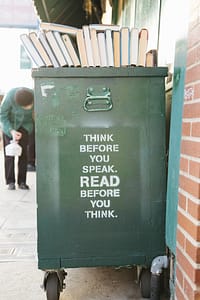Many people think that editing is proofreading – checking for spelling mistakes and making sure the correct punctuation and grammar is used. While proofreading is certainly one type of edit a manuscript can go through, it is not the only one and probably not the most important.
There are four types of edits and knowing which type your manuscript needs will help you improve the quality of your writing as well as time, money, and disappointment. So, don’t scrimp on this area because if you release a substandard book, you might damage your long-term success
What are the four types of edits?
1 – Developmental edits…
… focus on the big picture story. The purpose is to make the plot as best it can be. It looks at characters, structure, and plot. A developmental editor will look for point of view issues, inconsistencies, pacing issues, development of characters arcs, and themes. They will not look into the detail such as grammar, spelling errors, or punctuation because there’s no point if big revisions are required anyway.
Developmental edits are very important because if your have flaws, it doesn’t matter how beautiful the prose is or humorous the character, the story will fall flat and readers will not read.
2 – Line edits…
… focus on sentence-level improvements. The purpose is to make sure your story reads as well as it can and not confuse or stumble the reader. The editor will look at how clarity of words, specificity, sentence fluidity, and how you’re using your words, such as whether you’re repeating certain words or phrases, your sentences too verbose, or your dialogue too unnatural or stilted. Basically, anything that would stop the reader from imagining your story and keep reading.
Line edits should be completed before copy edits because there’s no point fixing technical errors when you’re still perfecting the sentence.
3 – Copy edits…
… focus on the technical aspects such as spelling, grammar, and punctuation. The purpose is to make sure your manuscript consistently adheres to writing standards. Copy editors also look for incorrect word usage and continuity mistakes.
4 – Proofreading…
… is the process of checking the proof copy of your story – i.e., the final stage of your formatted manuscript, about to go to print, and therefore is the last step before your story is published. Therefore, proofreaders are very detailed and look for things such as formatting errors (e.g., are page numbers displayed correcting on each page, are there consistent spacing between each line, or spelling errors). They will not assess the bigger picture story, such as whether there are holes in the plot or if the characters are well developed.
How to decide which type of edits you need
The types of edits are the same whether you traditionally publish or self-publish your story. The difference is that if you choose the former, the publishing house will have all these editors, who will work with you to embellish your story.
If you’re self-publishing, it would be ideal to undergo all these types of edits. However, if budget is a constraint, prioritise where you think the major issues are in your story and hire editors for those areas. Additionally, you can look for editors who offer packages which should include more than one style of edits – e.g., development and line edits, or copy editing and proofreading.
As hiring editors costs cold hard cash, don’t send them your raw first draft as tempting as it might be because editing can be expensive and if you’re hiring an editor by the hour or number of words, the cost can add up fast. So, self-edit your manuscript into in the best shape possible, including incorporating feedback from critique partners, before you send it to an editor to minimise cost and their time.
Tips for working with an editor when self-publishing
1. Set clear expectations before you hire an editor.
Like all relationships, communicate openly and regularly as this will make the process easier, quicker, and reduce misunderstandings. These include:
a. Which types of edits you’re expecting from them.
b. The expected output, such as tracked changes in a Word document, PDF, hard copy.
c. The point-of-view the story should be told in. E.g., third person limited, past tense.
d. For developmental edits, will they provide a chapter by chapter critique, when you can expect to receive the edits,
e. Are they open to having calls either on the phone or video chats so you’re not dealing with them exclusively via the email or text messages. Speaking on a call will humanise both of you and is a quick way of really understanding each other’s expectations.
f. How many times will you be able to speak with them after they’ve made the edits or will it cost you more to ask follow up questions about their edits?
g. When payment is due. Consider a payment schedule for each milestone such as every 20,000 words.
2. Ask if the editor if they will sample edit
The edits doesn’t have to be long – even up to 5 pages so both of you can get a sense of each other’s work. If working in Microsoft Word, ask for changes to be made via Track Changes and look out for what they change, why, how they edit, their process, how quickly they got back to you, and how easy it was to deal with them. Many editors will offer the sample edits for free but some may charge, so check before going ahead with this.
3. Be open to learn from the editor
There is no point hiring an editor to get into arguments on why their opinion suck. Sure, you might not agree with all their comments, however but have objective reasons for your objections. Don’t think that they don’t understand your genius. If required, also share the feedback with honest people you trust.
4. Editors will vary in their price and experience
Pick the one you can afford but don’t scrimp on this because the very being of your story is the writing on the page and it is the editor who should make these words even better.
5. Ask for a fixed price to cap your expense…
… instead of paying by the hour or the number of words, which can range from about 1 – 5 cents per word depending on the experience of the editor. At first glance, it might not seem like much but if your manuscript has 80,000 words, this can cost between $800 – $4,000. The good news is that some editors may adjust their fees depending on how clean your writing is (i.e., how much work they think they need to do on it). Therefore, make sure you write the best draft you can before hiring an editor.
6. You don’t need to make any changes the editor suggests if self-publishing
This is different with traditional publishers however there is no point hiring an editor and rejecting all their recommendations. Take the time to have open communications with them at the outset so both expectations are aligned.
7. Developmental editors will not make the edits for you
As this deal with the bigger picture (e.g., structural, plot or character issues), developmental editors will critique your work and provide suggestions, however they will not edit your manuscript. It is up to you, as the writer, to make the changes. In contrast, line editors, copy editors, and proofreaders will make changes to your writing.







